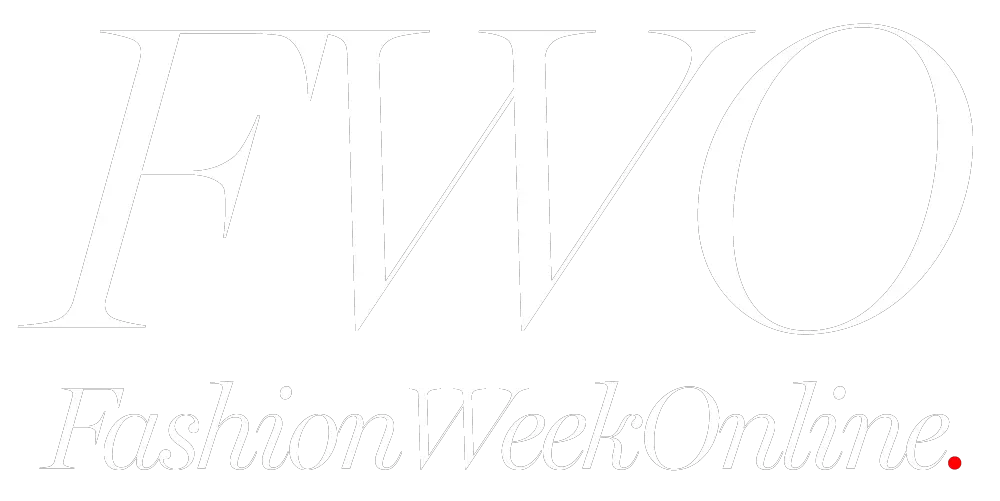The 17th edition of Feeric Fashion Week, a prestigious event on the East European fashion calendar, officially concluded last week in Sibiu, showcasing an array of stunning presentations held in unconventional venues.
This year’s theme revolved around pressing contemporary issues, including sustainability, collective memory, responsibility and visual research, setting the stage for an inspiring dialogue between past and future within the fashion industry. Feeric Fashion Week successfully culminated last Saturday evening following a final day of breathtaking presentations that transformed Sibiu once more into a global fashion stage. The concluding day brought together emerging designers alongside prestigious academic institutions, offering spectators a visual marathon that traversed unexpected spaces and contrasting aesthetic paradigms.
Feeric Fashion Week 2025
The fashion week kicked off with two days of education, seminars, and workshops led by renowned professionals from international fashion, focusing on entrepreneurship and sustainability in fashion. Among those who spoke to the audience of students were Sara Sozzani Maino, Giovanni Ottonello, Darja Richter Widhoff, Arielle Levy Verry, Alina Ceușan, Ioana Ciolacu, Oana Lazăr from NEPI Rockcastle, Rita Sarkis, Diana Dragotescu – Euronews, and representatives from the Institut Francais.
Michał Duraj, Andrada Negru, and Blanka Gotic were the winners of free study awards in the IED – Istituto Europeo di Design competition, while the list of talented graduates such as Wilczewska Emilia, Olivia Kobeissi, Ioulia Louvari, Almog Pinto Cohen, Coralia Dubou, Akvilė Bernotaitė, and Kaylee Johnson was complemented by the academic section of the festival, which highlighted universities from Romania and abroad: University of Arts and Design Cluj-Napoca, Ukrainian Fashion Education Group, National University of Arts Bucharest, Newgiza University Egypt, SAPU Fashion School Krakow, West University of Timișoara, New Bulgarian University, George Enescu University of Iași, Donja Gorica University powered by Arizona State University, University of Oradea, IDA- International Design Academy & IFM Academy, “Aurel Vlaicu” University of Arad, The Eugeniusz Geppert Academy of Art and Design in Wroclaw, Galala University Egypt, National Academy of Art Sofia, Notre Dame University-Louaize Lebanon, Viamoda Poland, Technical University of Moldova, Faculty of Textile Technology Zagreb, University of Haifa Israel, North Macedonia-International Balkan University, Kaunas University of Applied Sciences Lithuania, AthensFashionClub School. The presented projects demonstrated that artistic education and visual research play an essential role in reshaping the future of the fashion industry.
The first day of Feeric Fashion Week opened with a striking visual manifesto titled “Timeless Threads” by Hooldra, marking the fifth initiative under the Feeric Hub banner. This innovative collection exemplified how creativity and responsibility can coalesce to create exceptional pieces derived from the deconstruction and regeneration of second-hand clothing. Drawing inspiration from the aesthetics of the 1960s and featuring contributions from emerging designers throughout Europe, the presentation served as a powerful tribute to ethical fashion and sustainable practices. The set design featured newly implemented textile waste collection bins specific to Sibiu County, alongside an impressive display of over 3,000 kilograms of textile waste that had been collected within just six weeks of the project’s inception. During the show the textile waste was discarded in the city of Sibiu, collected for recycling by the sanitation company Soma. “Recycling is not enough!” was the message of the collection, accompanied by diversity and inclusion through collaboration with Cardinalia Models. Set in a backdrop of collection trucks and clothing waste, the collection advocated for conscious consumption and waste reduction.
Mitichi Preda, president of Feeric Fashion Week and the visionary behind Feeric Hub, emphasized, “We are all striving to recycle, transform, and make better choices. However, real change begins before the trash can with conscious consumption, responsibility, and a commitment to reducing waste at the source. Let’s not merely transform what’s already been discarded. It is imperative that we rethink how we consume.”
Following this impactful opening, the collection OP:1 by designer Wijnruit was showcased in a salt storage facility used for city snow removal. This collection explored themes of memory and identity, utilizing recycled materials such as military canvas, lace, wool, lycra, and custom prints to create modular pieces with adjustably short jackets and detachable sleeves, evoking cherished memories and values handed down through generations.
Among the transformed spaces into fashion stages were the underground parking of Promenada Sibiu, the Fortified Church of Cisnădie, the Moara Cibin of the Boromir group, and even the Municipal Stadium.
The first collective presentation took place at Feeric Venue, hosted this year by Promenada Sibiu, featuring innovative international fashion education initiatives. Participants included the Ukrainian Fashion Education Group, Newgiza University, New Bulgarian University, Almog Pinto Cohen, and “Aurel Vlaicu” University of Arad. The models paraded gracefully through a diaphanous setting, illustrating the transformative power of innovation coupled with academic training in shaping the future of the fashion sector.
At the end of the collective presentations, attendees were invited to experience an exhibition by Ana Farima titled “Bodaprosti.” Inspired by a fragile corner of childhood, this collection reconstructed the imagery shaped by words and spells of grandmothers, translating memories into garments with a profound visual impact. Each piece employed traditional craftsmanship techniques combined with an innovative eco-leather material sourced from plant waste, stimulating a subtle dialogue between heritage and experimentation. The exhibition was further enhanced by an observational short film crafted from personal archival recordings and contemporary materials, offering a rich exploration of memory, identity, and the continuity of tradition and innovation.
The underground parking lot of Promenada Sibiu was transformed into an extraordinary contemporary art gallery featuring two dynamic fashion shows. INSIDE Upcycling Couture presented the collection “Appearance of Transition │ Transition of Appearance,” a visual study of metamorphosis, showcasing hand-crafted pieces made from abandoned materials. This collection juxtaposed light and darkness, vibrant color against monochrome elements. Subsequently, the brand WE – Wilczewska Emilia unveiled “DOM,” inspired by the concept of home as a sanctuary. Utilizing materials such as pillows, quilts, and curtains, the pieces were transformed into spacious silhouettes that embody comfort and solace.
As the week progressed, the same industrial backdrop of the underground parking lot continued its aesthetic evolution, featuring presentations from the Fashion Department of the National University of Arts Bucharest, which introduced a selection of bachelor’s and master’s works. These pieces examined fashion as a platform for critical reflection and visual inquiry, surprising audiences with their variety, personal themes, and experimental forms. The evening culminated with “Escapism” by Michal Duraj from the Faculty of Art in Wroclaw, Poland, which drew inspiration from the film The Virgin Suicides and the nostalgia associated with imaginary summers. The collection featured washed-out hues, patinated textures, and sustainable materials, culminating in a wardrobe that emanated poetics and fragility.
Feeric Fashion Week 2025 commenced as a powerful showcase of creative innovation and a steadfast commitment to sustainability, education, and diversity. The opening presentations reaffirmed Sibiu’s position as a reference point in the international fashion scene — a vibrant locale where history and future aspirations converge on the runway.
The second day of Feeric Fashion Week 2025 brought an impressive array of artistic concepts and expressions, utilizing distinctive venues throughout Sibiu and the surrounding areas.
In the historically rich courtyard of the Evangelical Church in Cisnădie, the day commenced with a series of presentations. The collective collection from the Technical University of Moldova proposed an artistic vision deeply inspired by themes of femininity, solitude, astral archetypes, and a reimagining of the poem Luceafărul, emphasizing decorative refinement and creative material combinations. Following this, Blanka Gotić presented “Obedience in Fragments,” inspired by the symbolism inherent within the Mormon religious community, incorporating materials such as poplin, sheer fabrics, and natural twine, crafting a poetic meditation on faith and feminine identity.
The Feeric Venue then transformed into a platform for six diverse collections promoting messages centered on transformation, sustainability, and diversity. Galala University showcased “Transformation,” where emotions, paintings, and fairy tales morphed into wearable art, utilizing cotton, linen, and velvet processed with innovative techniques.
University Donja Gorica collaborated with Arizona State University to present “Unknown Nature,” featuring pieces made from recycled denim, evoking abstract and unexpected forms. The National Academy of Art – Sofia captivated audiences with “Symbiosis,” an interdisciplinary dialogue between art and science, featuring zero-waste pieces inspired by biodiversity. Designer Ioulia Louvari introduced “Heterogeneity,” a celebration of inclusion and uniqueness portrayed through diverse textures and harmonious contrasts.
The University of Oradea presented “Error,” exploring post-human silhouettes characterized by ample volumes and industrial materials, while Notre Dame University – Louaize concluded the series with “Prism Thinking,” a collection emphasizing resilience, exemplified through sculpted corsets and contrasting materials.
Later, at Baia Populară, Viktor Spasov presented for VERÈDIA the collection “NOCTERA,” introducing an innovative take on “power dressing” that merges authority with delicacy using rich black velvet, flowing organza, and precious detailing. The Dualitae brand, designed by Alina Lazariu, highlighted the timeless appeal of the white shirt through the collection “The Quiet Icon,” illustrating how simplicity remains a potent statement of style. Established in 1904 in a Jugendstil style, Baia Populară uniquely offered pioneering health and relaxation services, quickly becoming a renowned sanatorium. Recently restored with over 20 million RON invested, it now harmonizes historic charm with contemporary wellness facilities, positioning itself as a sought-after spa destination for residents and visitors alike.
The evening concluded on the terrace of Promenada Sibiu, offering a breathtaking view of the city. The collection “SYNERGIA 2025” by Promenada Sibiu x Raluca Elena Cînean, titled “Summer is Calling,” encapsulated the essence of summer with its lightweight fabrics, pastel tones, and sea-inspired accents. The creations seamlessly intertwined comfort and elegance, heralding a refreshing new direction for the brand focused on simplicity, identity, and freedom.
Feeric Fashion Week 2025 remains dedicated to being a nexus where fashion transforms into a universal language of creativity and innovation, embarking on a captivating journey through art, history, and modern visions. Individual presentations took place at Fabrica Boromir and Municipal Stadium Sibiu, culminating in the highly anticipated Gala Feeric Fashion Week, which showcased a vibrant display of creativity and fashion forwardness.
The third day premiered with a special initiative, Haide, a project coordinated by Karla Ciambur and residing under the Feeric Hub umbrella. HAIDE represents a cultural initiative designed to seamlessly integrate Romanian traditions into contemporary dialogue, ensuring the authentic values of folklore resonate with modern generations. This project convened artists, artisans, researchers, and contemporary creators in a symbolic “horă” that celebrates the arts and Romanian cultural identity. The event took place at Cinegold.
The initial presentations of the day unfolded in the basement of Morii Boromir, featuring the collection “Paper Dolls” by Natalie Soto. This reflective collection addressed themes of healing and reinvention, showcasing romantic silhouettes imbued with edgy accents: reinterpreted shirts, cargo pants, bubble skirts, and babydoll dresses in shades of black, pink, and yellow. The collection was crafted from repurposed fabrics—jerseys, remnants of suits, lace, organza, and handwoven textile scraps—augmented with hand-stitched details, pearls, bows, and woven bags, exemplifying that from fragments, something braver and more beautiful can emerge.
The subsequent presentations moved to the Stadionul Municipal Sibiu, where student designs offered daring perspectives on contemporary societal challenges. Students from the West University of Timișoara engaged in a contemporary discourse addressing collective memory, identity, trauma, rebirth, fragility, and digital alienation, all expressed through innovative volumes, textures, and materials. Designers from the National University of Arts “George Enescu” in Iași—Alexandra Țigăeru, Delia Briceag, and Teodora Gaciu—orchestrated a visual journey where past symbolism and future visions existed within a harmonious contrast, merging reinterpreted tradition, spiritual symbolism, and sustainable deconstruction.
The evening reached its zenith with the Gala Feeric held in Piața Huet, serving as the centerpiece of the week’s events. The collections showcased a remarkable array of styles and ideas, celebrating a vibrant diversity within the fashion industry:
- Mild Power – Kauno Kolegija HEI: “Cuoricini,” a dialogue between delicacy and strength, femininity and struggle, in knitwear, velvet, and raw denim.
- Daiana-Mihaela Stăncioiu: “UNAPOLOGETIC,” an artistic project from UAD Cluj-Napoca merging the bidimensionality of photography with the tridimensionality of garments, featuring botanical details, embroidery, and 3D elements.
-
IDA – International Design Academy & IFM Academy: “Timeless Monochrome
Sophistication,” a collection in black and white exploring balance and timeless elegance. - International Balkan University: “Reflections,” a blend of sustainability, streetwear, and contrasting aesthetics featuring fluid draping and recycled materials.
- Kaunas University of Applied Sciences: “Does She Speak Samogitian?” by Akvilė Bernotaitė, revitalizing Samogitian tradition, and “Grief” by Kaylee Johnson, inspired by brutalist architecture.
- Viamoda: Eight designers exploring gender identity, from androgyny to historical femininity, through lace, embroidery, and functional sustainable pieces.
- The University of Art and Design in Cluj-Napoca: collective BA and MA 2025 exhibition representing a visual lab of volumes, haute couture embroidery, and sustainability.
Hosted by the dynamic TV personality Cosmina Păsărin, the Gala Feeric Fashion Week successfully concluded the 17th edition, reaffirming Sibiu’s status as an international hub for emerging fashion. The unconventional venues, bold concepts, and creative energies from the designers transformed the city into a vivid landscape where fashion became a universal dialect, ever-evolving toward the future.
Feeric Fashion Week 2025 is co-financed by the City Hall of Sibiu and the Sibiu County Council, with significant support from primary partners NEPI Rockcastle and Promenada Sibiu. International collaborators included the French Institute, the French Embassy, Euronews, IED Milan, Ford, CineGold and Boromir.
##



































